F1 Vs F2 Goldendoodle [Which is Better]
Goldendoodles as a breed are low maintenance, friendly dogs with various look and temperament options. All these positive traits are thanks to the different generations of breeding within this crossbreed that selects the key qualities of poodle or golden retriever to accent.
Telling the difference between F1 vs F2 Goldendoodle doesn’t have to be difficult because while they often have a unique look, it all comes down to their parents. Were their parents a purebred poodle and purebred golden retriever or “purebred” Goldendoodles?
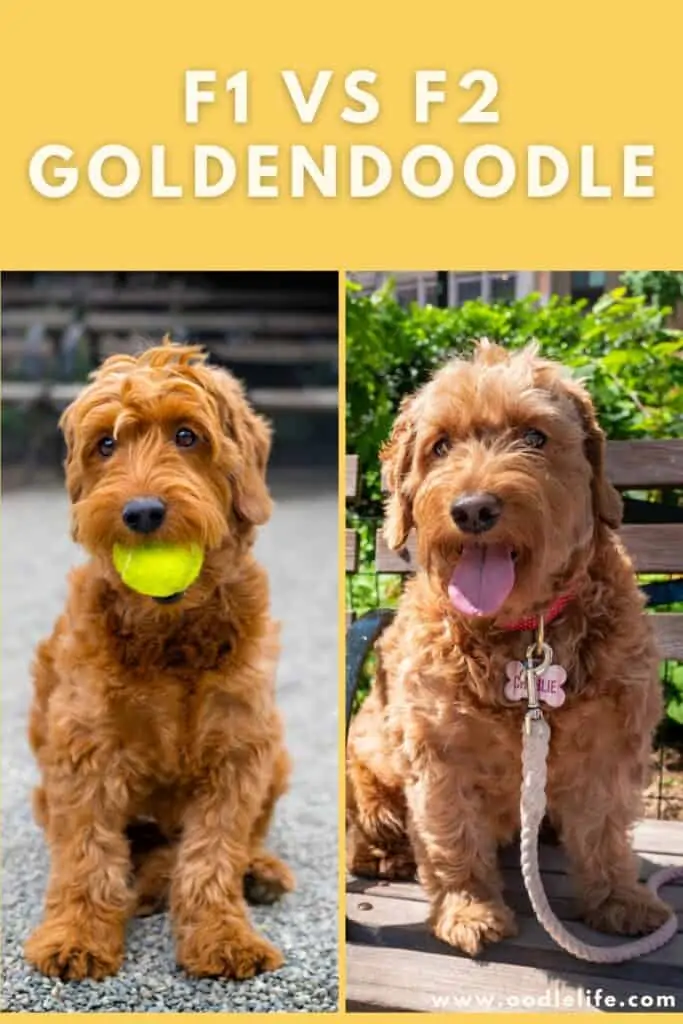
There are many different doodle generations available that offer other qualities, from F1 to F2 and multi-generation. How can you choose which type of Goldendoodle is the best one for your family so you can then start researching breeders?
With this article, you’ll have all the information to choose which generation works best for your family’s preferences.
What is the Difference Between an F1 or F2 Goldendoodle?
The F1 Goldendoodle is a first-generation crossbreed dog, which results from breeding a purebred poodle with a purebred golden retriever.
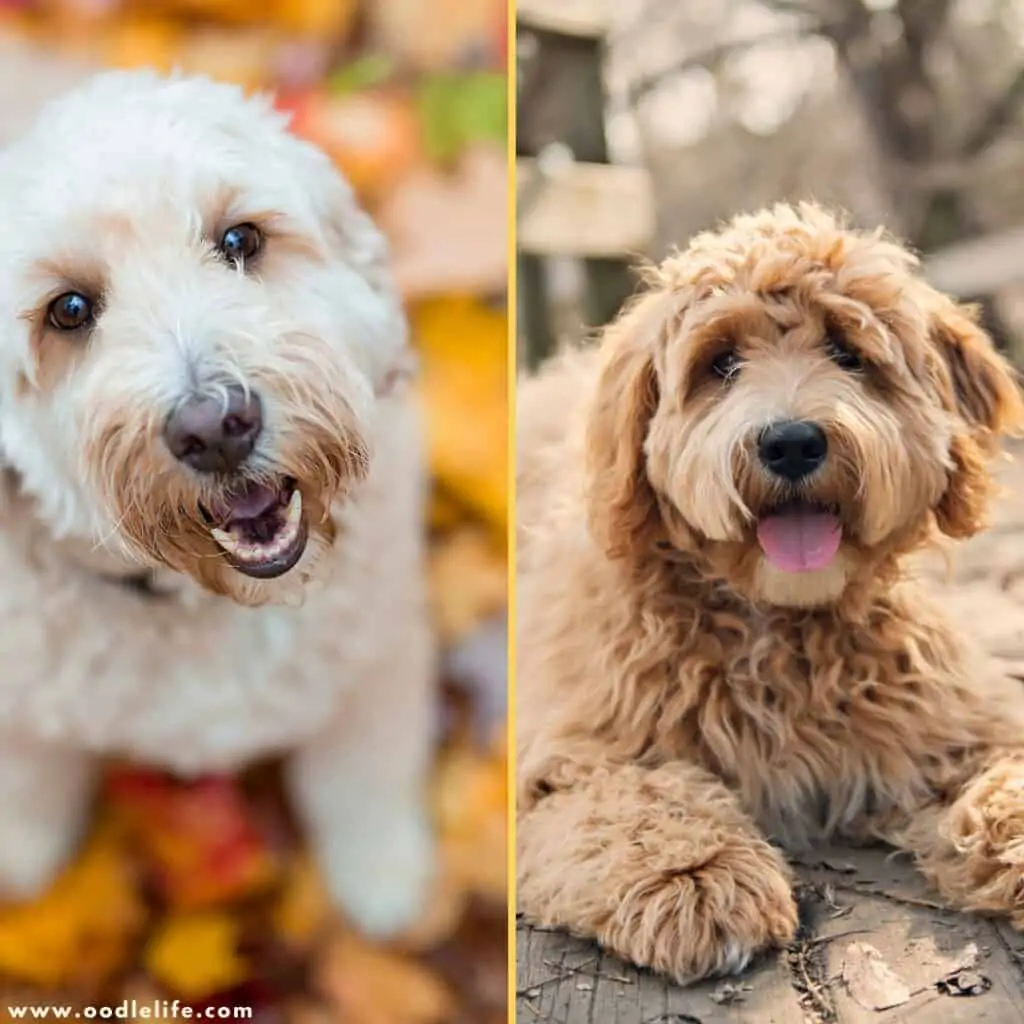
The F in F1 and F2 stands for “filial,” which denotes a generational relationship between that dog and its parents. In lineage charts, the purebred parents are represented by their names and pedigree and either a “P” for poodle or “G” for golden.
After F2, the breeding of two F1s together, the F3 Goldendoodle is then created from breeding two F2s. F3 is often labeled multi-generational as each breeding brings them further from the original purebred poodle and purebred golden retriever. This article will focus on F1 and F2, but the F3 and later multi generation Goldendoodle will be similar to F2s.
All about the F1 – First Generation Goldendoodle
F1 Goldendoodle puppies are genetically 50% poodle and 50% golden retriever, and thanks to this purer heritage, they have fewer health problems than dogs with a more mixed background. The hereditary health problems they do have will often be ones associated with purebred dogs.
Poodles historically have issues with conditions like hip dysplasia, bloat, and Addison’s disease. This is true of a Mini Poodle as well. In comparison, golden retrievers may suffer from elbow and hip dysplasia, thyroid issues, and skin concerns.
To reduce the risk of health risks like hip dysplasia which both breeds may have, make sure both parents are health checked and testing is completed for genetic diseases before breeding.
Goldendoodles’ somewhat teddy bear appearance is adorable, and F1 Goldendoodles offer the best of both breeds when it comes to appearance.
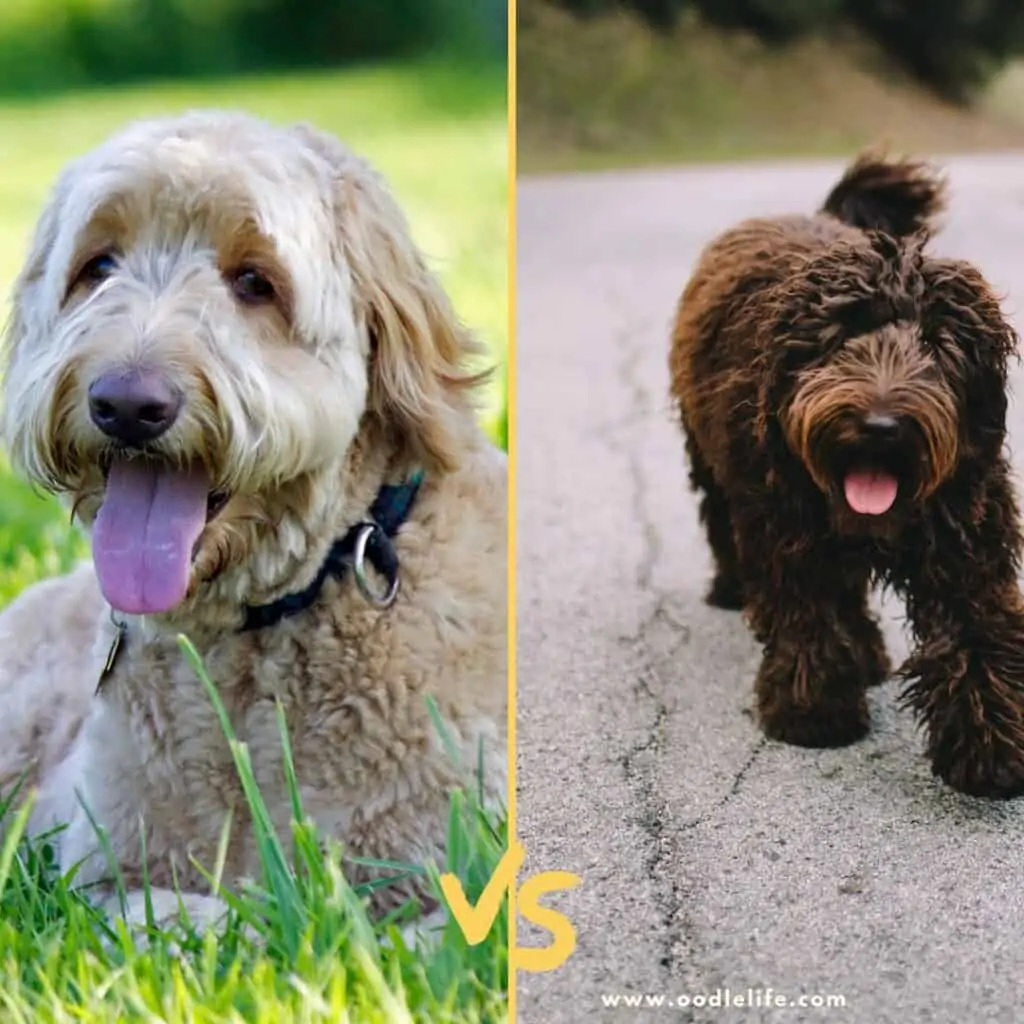
The coat of a golden retriever is not usually low shed, while the poodle often is, so this type of Goldendoodle offers a variety of coat types that range from:
- Flat, retriever-type coats
- Wavy, setter-type coats
- Curly, poodle coats
A litter of F1 Goldendoodle breed puppies may run the gamut of their genetic histories. One litter may have a few that look like poodles and a few looking like golden retrievers, and some looking somewhere in between. You may see some puppies with low shedding coats and others with high shedding and high maintenance coats in the same litter together.
Suppose low shedding and high allergy tolerance are important qualities to you and your family, and you don’t mind a Goldendoodle with more poodle traits than retriever. In that case, you can choose an F1B Goldendoodle.
The F1B Goldendoodle
Between the F1 and the F2 is the F1B. The F1B is the breeding of an F1 Goldendoodle with an unrelated purebred poodle creating a litter that has the genetics of 75% poodle and 25% golden retriever, giving a higher probability of fleecy, no shed coats that are more hypoallergenic.
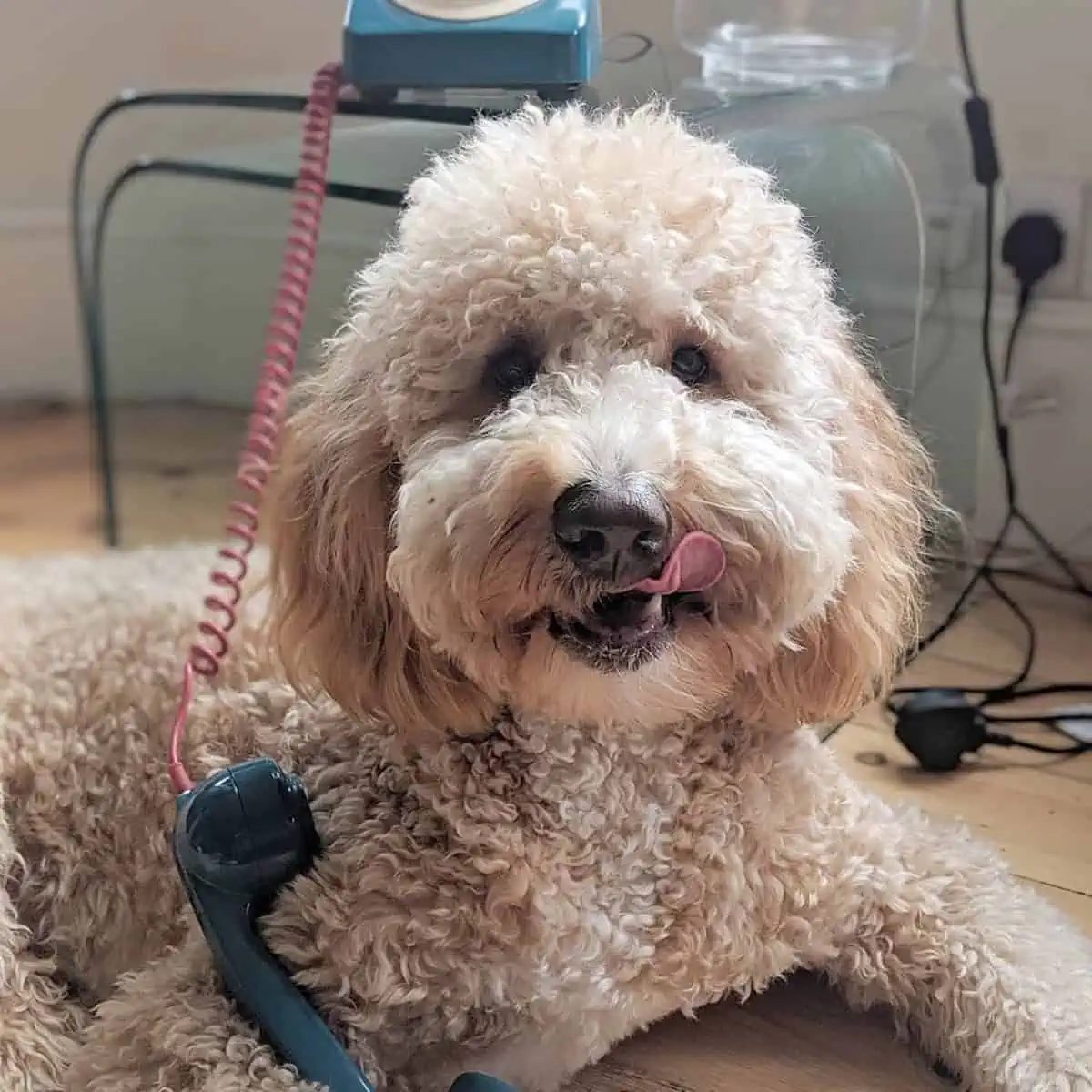
The downside to the hybrid dog F1B fleecy coats and F1 retriever coats, while having a great chance of being hypoallergenic, they will require lots of brushing and monthly grooming to trim their hair. You will also have the issue of three parents to consider for possible health issues. Poodle genetics and Golden Retriever genetics.
All About the F2 – Second Generation
F2 puppies have F1 hybrid Goldendoodle parents and are one step further removed from purebred lineage.
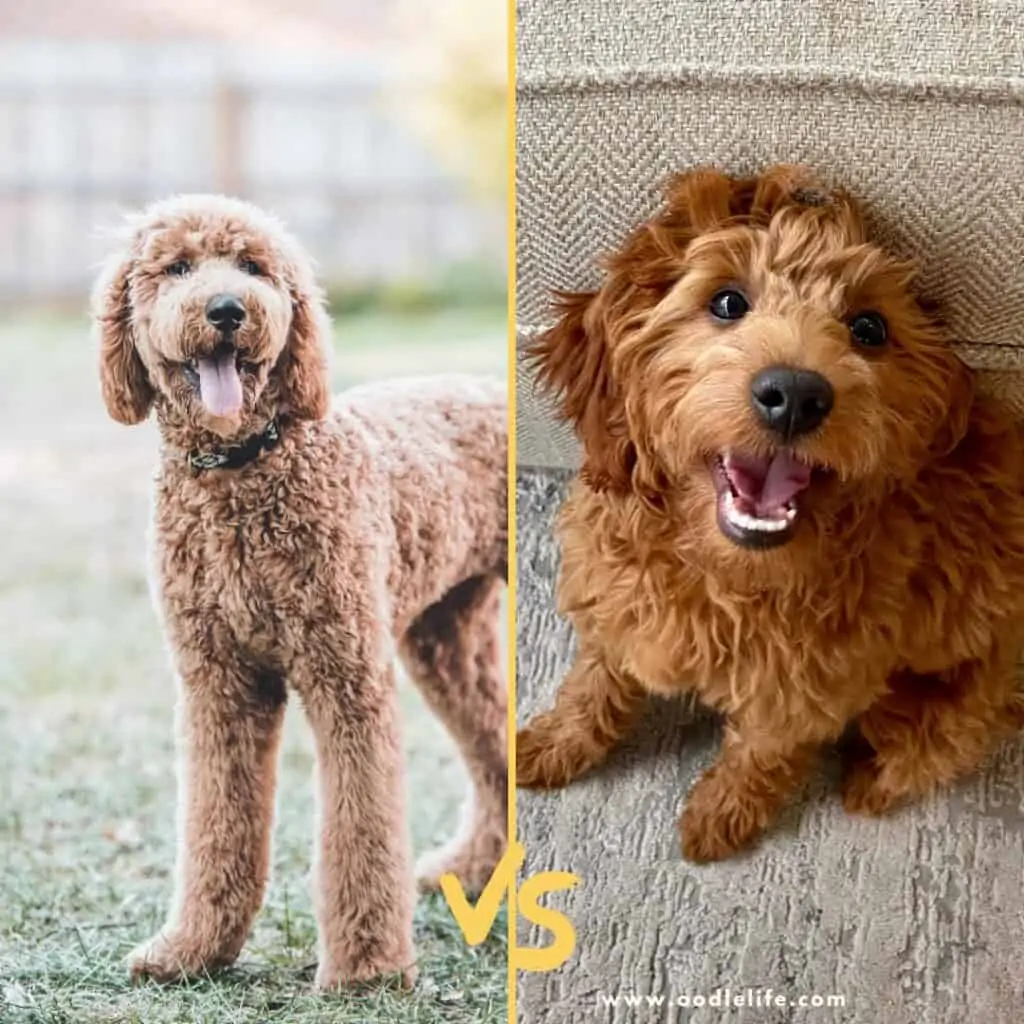
Having two hybrid parents means all the puppies now possess 50% Poodle and 50% Golden Retriever. Still, they have the more mixed genetics since there are four parents in their history instead of just two that the F1 has, two opportunities for golden retriever issues, and two more for poodle issues that the breeder must balance to have a well-rounded dog.
The benefit of the F2 Goldendoodles extra genetics means they are generally more hypoallergenic. While they have various coat types and are more varied than F1, they have the option for wooly or fleecy coats that give that teddy bear appearance.
- Wooly coats are soft and need lots of brushing
- Fleecy coats are no shed and the most hypoallergenic but require regular trimming
If you’re looking for a greater chance at a hypoallergenic coat and want to maintain the 50% golden retriever lineage, perhaps for the more golden retriever look that the F1B doesn’t offer, the F2 may be a better choice.
It’s not just coat types that offer variety to the F2 type. Breeders of F2 Goldendoodles will often specialize in colors as well as hair types. By breeding specific colors with different pigmentation genes, breeders can further develop a signature color or marking pattern for their kennel. F2 Goldendoodles come in a wide variety of colors available:
- White
- Cream
- Apricot
- Reds
- Merles (Chocolate and Blue)
- Phantom (Chocolate and Black)
- Silver
- Sable
These dogs also appear in brindle (stripes), all black, or all chocolate in rare circumstances. Mini Goldendoodle puppies come in all the same color coats.
F1 Vs. F2 Goldendoodles
Now that you know the pros and cons of each type of Goldendoodle and why breeders may choose to specialize in one or the other, the end question is: F1 vs. F2, which Goldendoodle type is the best?
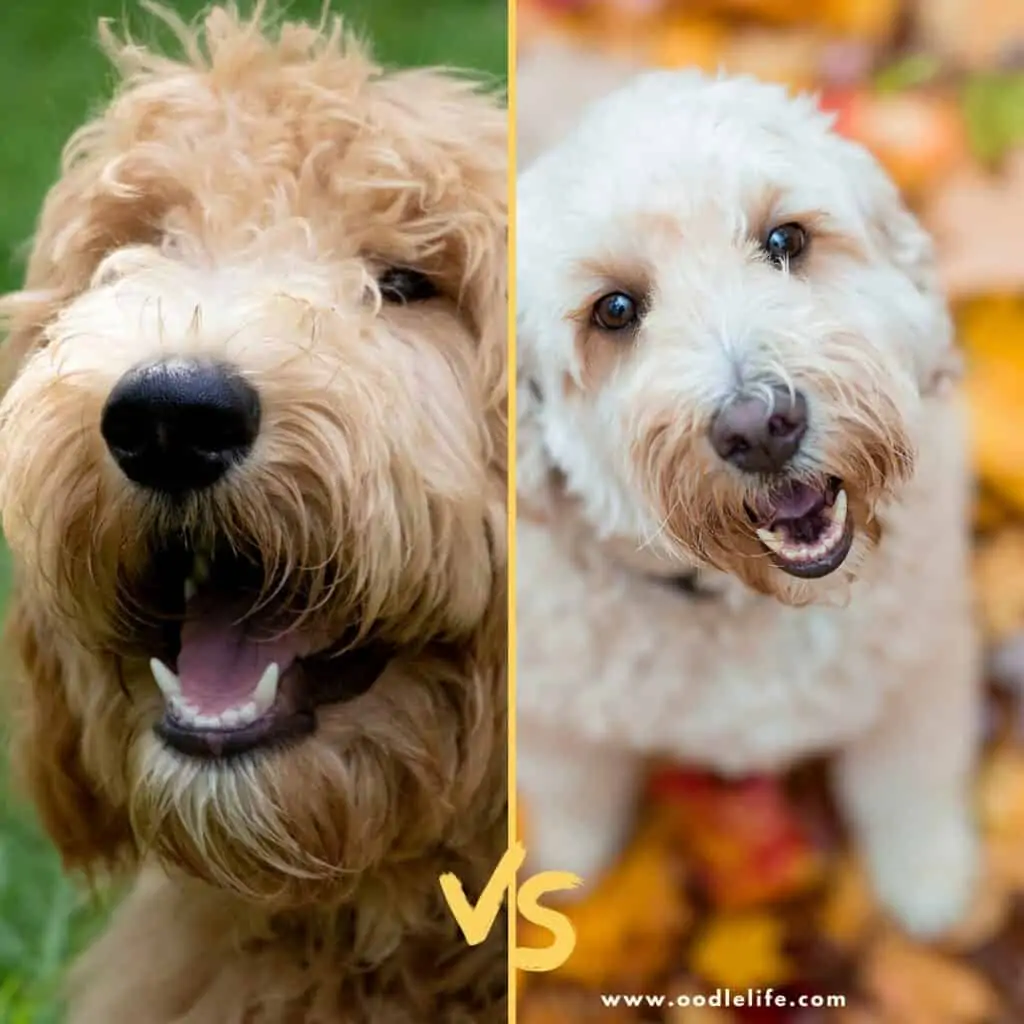
The answer is not that one type is better than the other because both kinds of Goldendoodle offer different pros and cons for different families. This is true of any pure or crossbreed dog; every family is as unique and special as the puppy they’re looking to bring into their family.
For Highly Allergenic Families:
The hypoallergenic coat is the most important feature for coping with allergies.
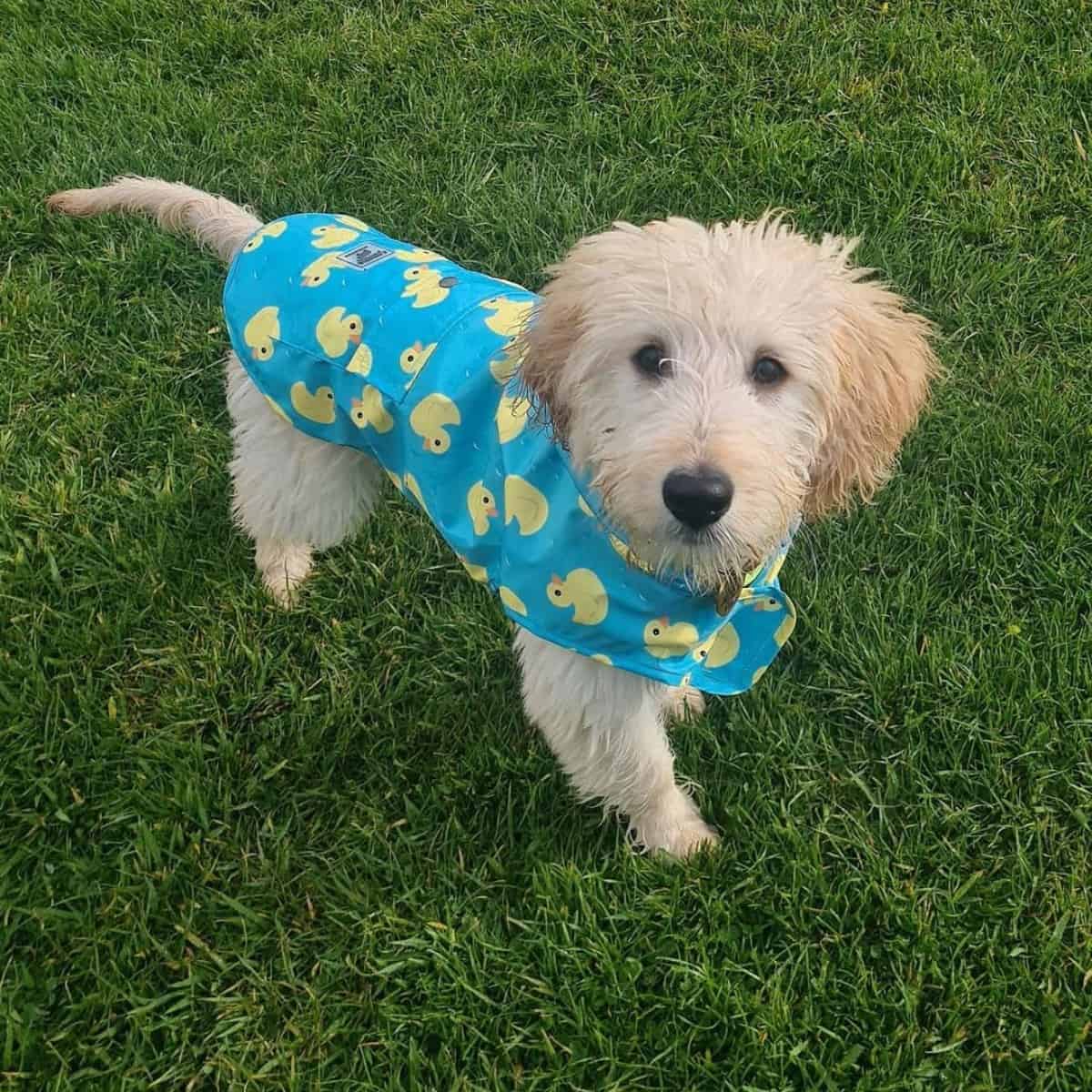
One of the reasons the Goldendoodle is a popular breed for families is they often have very hypoallergenic coats thanks to their poodle heritage. It’s one reason breeders will often backcross and breed an F1B, a purebred poodle with an F1 Goldendoodle, to increase the chances of fleecy and wooly coats.
However, F1B doodle types don’t look like retrievers and may be too small for some families. The only way to get the trademark Goldendoodle look is to either breed two purebred dogs with less chance of that hypoallergenic coat or two F1 Goldendoodles.
F2 Goldendoodles offer a higher possibility of hypoallergenic coats and a wider choice of options even within the same litter.
Although, it’s important to remember that no breed is completely hypoallergenic, and severe allergies may need another remedy. The allergen that causes the reaction may be found in the hair as well as the saliva.
Fleecy and curly coat types are lower shed and usually have lower dander levels.
For Low to Moderate Allergy Families:
F1 and F2 Goldendoodles may be appropriate for lower allergy families. Look for curly coats and coats that shed less, requiring less brushing and monthly grooming.
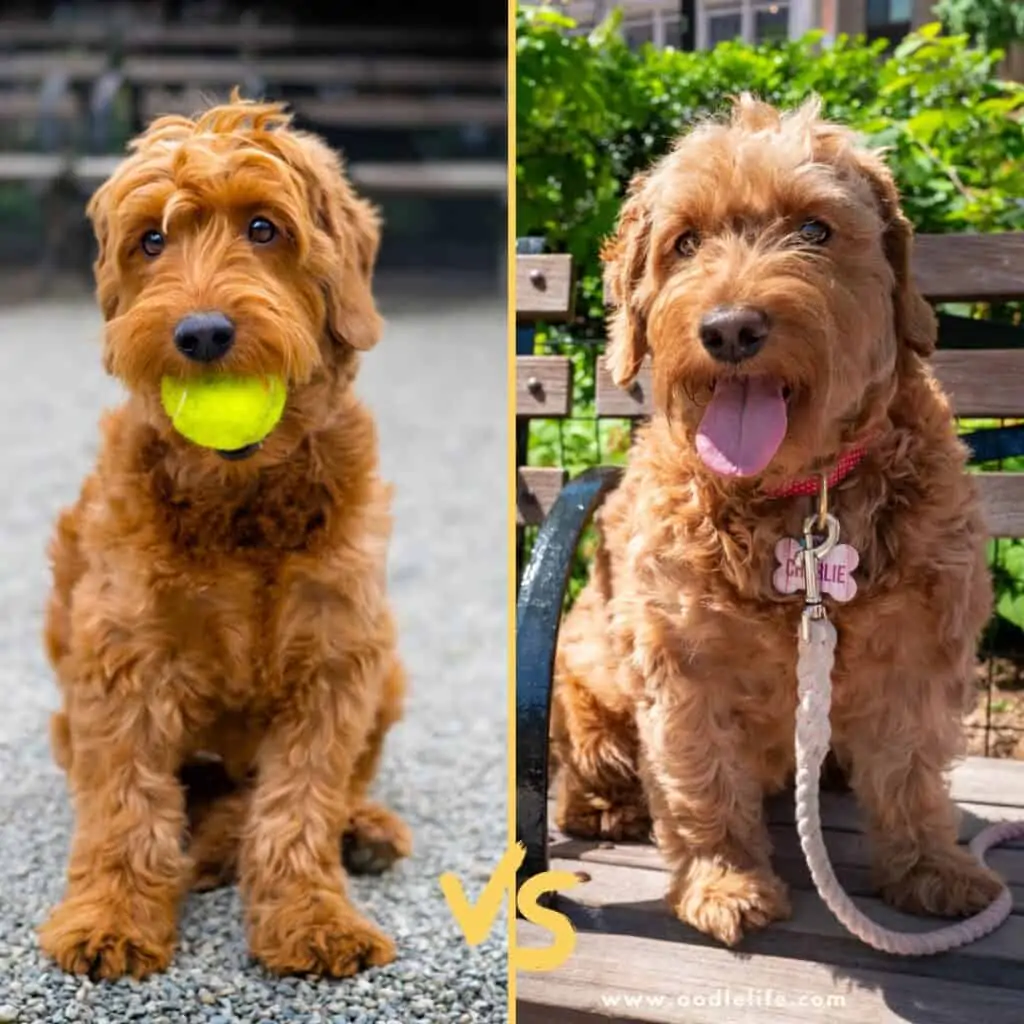
If You’re Worried About Genetic Health Problems:
Choosing an F1 Goldendoodle means fewer dogs that can have a hereditary problem. The more crossbreeding necessary to create your puppy, the more opportunity for genetic material that may have a marker for potential issues.

Although any F1 doodle dog can develop genetic health problems, diseases like hip dysplasia can be found through the testing for it in the parents and lineage of a line.
Most reputable breeders agree that dogs with the genetic markers for hip and eye issues shouldn’t be bred and instead live out their lives as just pets or working dogs.
First-Time Dog Owners:
F1 Goldendoodles may make the job of the first-time dog owner a little easier. When choosing any puppy, it’s vital to meet both parents to see any potential behavior problems that may arise as the puppy gets older.
Choosing an F1 Goldendoodle means fewer chances for issues, just like the considerations for genetic health problems although no dog is perfect.
Crossbreeds such as the Goldendoodle are becoming more and more popular thanks to their hypoallergenic coats, size, and temperament. It is why Goldendoodles are almost as popular as either the Poodle or Golden Retriever Purebred dog.
Goldendoodles are considered excellent for first-time dog owners being kid-friendly if raised with children and easy to train.
The Bottom Line
F1 and F2 Goldendoodles can make great pets for the first time and experienced dog owners alike. They both offer the opportunity for healthy puppies with strong lineage and healthy dispositions. The essential part of choosing is choosing a good breeder.
When it comes to how much a Goldendoodle costs, a F1b and F2 Goldendoodle often cost the most.
A good breeder will become a friend to the family and want their puppies to go to great homes suitable for them. However, if it comes down to allergies, choose an F1B or multigen F2 Goldendoodle to maximize the opportunity for a hypoallergenic coat.